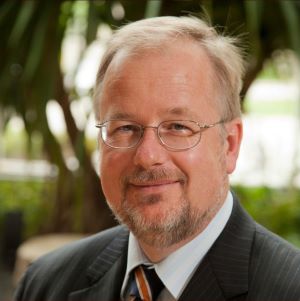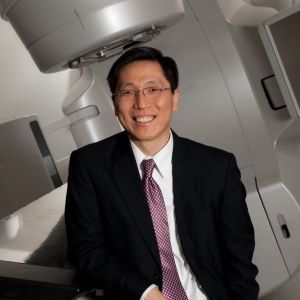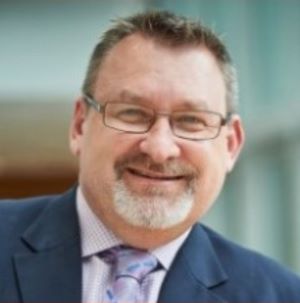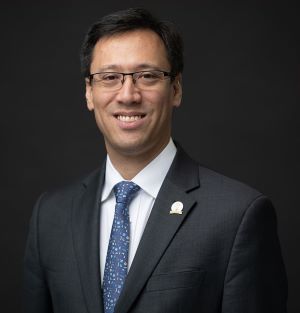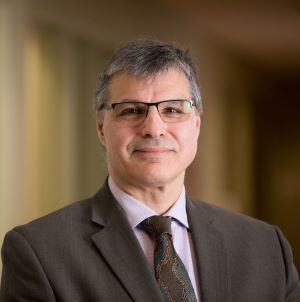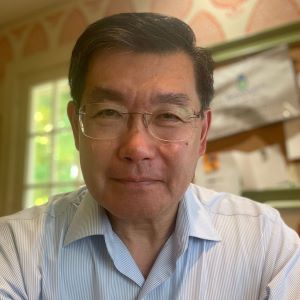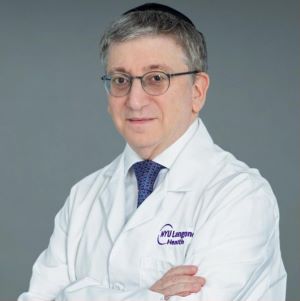Faculty - MMND
Meet the Mini Micro Nano Dosimetry (MMND) faculty
- Dr Erin Angel
- Dr Stefan Bartzsch
- Professor Chris Beltran
- Professor Stefan Both
- Dr Nicolas Depauw
- Professor Valentin Djonov
- Dr Stuart George
- Dr Taku Inaniwa
- Professor Katia Parodi
- Associate Professor Dale Prokopovich
- Dr Francesco Romano
- Professor Reinhard W Schulte
- Professor Elisabeth Schültke
- Professor Cinzia Talamonti
- Dr Maria Thor
- Dr Marie-Catherine Vozenin
- Professor Jeannie Wong

Dr Erin Angel is a med tech executive with a rare combination of strong scientific background and business acumen. She oversees Global Research & Scientific Affairs for GE HealthCare and has held leadership roles in scientific and medical affairs, as well as product leadership. Her experience includes general management for a business division that was one of the 3 largest Computed Tomography businesses in medical imaging in the US. A medical physicist by training, she is dedicated to positively impacting clinical care by effectively translating innovations to the clinical environment. She began her medical physics training at the University of Wollongong doing a research fellowship with Dr Anatoly Rozenfeld.
Dr Angel holds dual bachelor’s degrees in physics and business economics, and she earned her master’s and PhD in biomedical physics from UCLA.
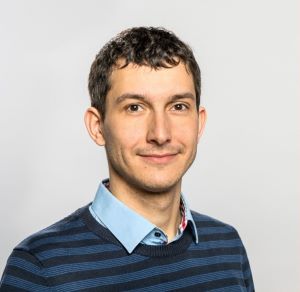
Dr Stefan Bartzsch is a physicist specialising in medical radiation physics. He obtained his PhD in 2014 from Ruprecht-Karls-University Heidelberg, Germany, with a thesis on Microbeam Radiation Therapy, earning the highest distinction of "Summa cum laude." He completed his habilitation at the Technical University of Munich in 2022.
Currently, Dr Bartzsch leads the Emmy Noether team at the Institute for Radiation Oncology, Klinikum rechts der Isar, Munich, Germany. Since 2018, he has also been a team leader at the Helmholtz-Centre for Health and Environment in Munich. His postdoctoral research included significant work at both the Technical University of Munich and the Institute of Cancer Research in London.
Dr Bartzsch's research focuses on innovative strategies in radiation oncology, aiming to reduce the toxicity of radiation therapy. His interdisciplinary team, consisting of experts in medical physics, engineering, biology, and computational sciences, collaborates with global partners to advance cancer treatment. His work includes the integration of cutting-edge technologies such as deep learning and preclinical in vivo experiments.
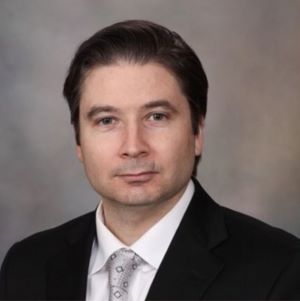
Professor Chris Beltran is Chair of the Division of Medical Physics; Director of the Particle Therapy Technical Program; Professor of Medical Physics at the Mayo Clinic School of Medicine; and Consultant, at the Department of Radiation Oncology; Mayo Clinic Jacksonville Florida. Professor Beltran received his PhD in Nuclear and Accelerator Physics from Indiana University in 2003 based on his research at Los Alamos National Laboratory. He completed his Medical Physics Residency at Mayo Clinic in Rochester Minnesota in 2006 and subsequently accepted a position at St. Jude Children’s Research Hospital. In 2011 he rejoined Mayo Clinic in Minnesota to lead the proton treatment planning section for their new proton facility. In 2020 Professor Beltran joined the team at the Mayo Clinic Florida to help lead the new Carbon/Proton Therapy Facility in Jacksonville Florida, which will be the first carbon therapy facility in the Americas.
Professor Beltran is an author of over 100 scientific publications and is frequently asked to give conference presentations and visiting professor lectures. He has mentored several junior faculty, postdoctoral fellows, and graduate students.
Professor Beltran’s research lab has focused primarily on particle therapy in the last few years with a focus on computational and translational radiation biology.
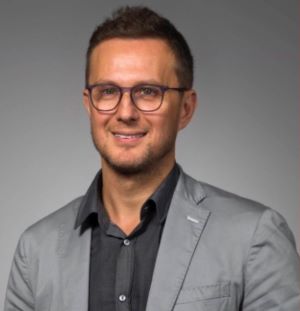
Stefan Both received his PhD degree from the Babes-Bolyai University in 2005. His physics career started at the Kiricuta Oncology Institute, Romania, in 1996. He immigrated to the US in 2000 and worked in private and academic radiation oncology. In 2008, Dr Both became a faculty member at the University of Pennsylvania, Philadelphia, where he was able to advance treatment programs in conventional radiotherapy, establish and lead the physics residency program, and spearhead technical advances, including proton therapy. In 2015, he joined Memorial Sloan-Kettering Cancer Center in New York City as an Associate Attending and Lead Physicist.
Since September 2017, he is the professor and Head of the Medical Physics in the Department of Radiation Oncology of the University Medical Center Groningen, and as of September 2020 also the Head of the Particle Therapy Research Center. He has served on committees and working groups in the American Association of Physicists in Medicine, the Particle Therapy Co-Operative Group, the European Society for Therapeutic Radiology and Oncology, Residency Education Program Review Committee of the Commission on Accreditation of Medical Physics Programs, American Board of Radiology and Cancer Research UK, Swiss Science Foundation, etc. He is board certified by the American Board of Radiology in Therapeutic Radiological Physics and a Fellow of the American Association of Physicists in Medicine. At UMCG his main focus is Proton Therapy and his research interest is related to high precision radiotherapy.
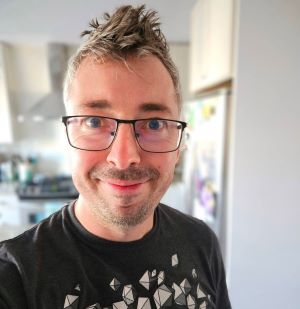
Dr Nicolas Depauw began his academic journey with a General Engineering degree from E.S.E.O in Angers, France, specialising in Computer Science and Electronics. He then pursued a dual Master's degree in Medical Physics at the University of Wollongong, Australia, which included a transformative internship at Massachusettes General Hospital (MGH), where he contributed to the deployment of Pencil Beam Scanning (PBS) technology.
Following diverse roles in research and clinical practice, Dr Depauw achieved certification as a therapeutic physicist from the American Board of Radiology (ABR) in 2013. He completed his PhD in 2015 in collaboration with the University of Wollongong, culminating in his appointment as a faculty member at Harvard Medical School (HMS).
Currently, Dr Depauw serves as the Physics Lead for Proton Treatment Planning at MGH and as an Assistant Professor at HMS. His work focuses on advancing the field of medical physics through cutting-edge research and clinical innovation.
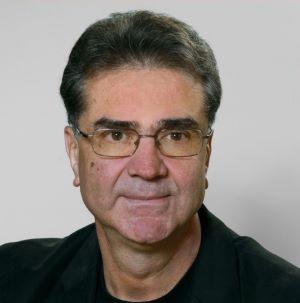
Professor Valentin Djonov entered a research position in the Department of Clinical Research at the University of Bern, Switzerland, in 1992, after several years in neuro- and general surgery.
In 1996 he became a research assistant in the Division of Developmental Biology at the Institute of Anatomy, Bern. This was followed by his habilitation (assistant professorship) in 2002 followed by associate professor in 2006 at the same institute.
In September 2007, Valentin Djonov was promoted to full professor and became co-director of the Institute of Anatomy in Fribourg, Switzerland. After a period of 3 years, he returned to Berne where he is currently the Director of the Institute of Anatomy and medical advisor at the Translational Research Center SITEM, Switzerland.
The main scientific interest of his group is the radio-biological effects induced by Spatially Fractionated Radiation Therapy (SFRT). SFRT is a novel radiotherapy technique using spatially fractionated X-rays to produce alternating regions of high and low-dose deposition in the target tissue. This results in unique radiation/tissue interactions that expands the therapeutic index of radiation therapy by increasing tumour control, including that of radioresistant malignancies, while simultaneously exhibiting remarkable normal tissue sparing even when delivering peak doses of hundreds of Grays. SFRT demonstrated the first promising results by treatment of inoperable, radioresistant lesions in human and pet patients.
Professor Valentin Djonov is the author of more than 300 scientific papers with more than 16’000 citations (h-index=65) and numerous patents.
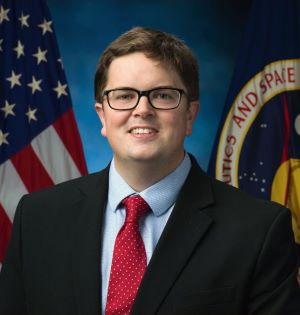
Dr Stuart George is a physicist working for the Space Radiation Analysis Group at NASA Johnson Space Center.
Dr George’s research is focused on space radiation protection, and specifically on the development of Hybrid Pixel radiation detectors to protect NASA crew during human spaceflight. Dr George has worked on a large variety of flight instruments during his career at NASA, recent highlights include serving as PI for radiation measurements during the recent Polaris Dawn mission, instrument science lead for the HERA detector on Artemis I and LETS detector on Biosentinel. Dr George also serves as PI for the Compact Electron Proton Spectrometer, a space weather early warning instrument funded by the NASA Development and Advancement of Lunar Instrumentation program.
Dr George’s research has been published in Nature and featured in a variety of media outlets including CNN, Reuters and ABC Australia. Prior to working for NASA, Dr George held a Marie Curie fellowship at CERN and completed degrees at the University of Wollongong (Australia) and University of Sheffield (UK).
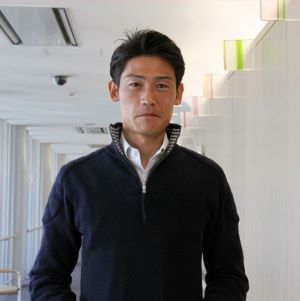
Dr Taku Inaniwa, PhD, is a group leader of treatment beam research group at the Institute for Quantum Medical Science, National Institutes for Quantum Science and Technology (QST) in Japan. His research focuses on developing dose calculation algorithms and biological models used for charged-particle therapy treatment planning. From April 2022, he has concurrently served as a guest professor at the Division of Health Science, Graduate School of Medicine, Osaka University.
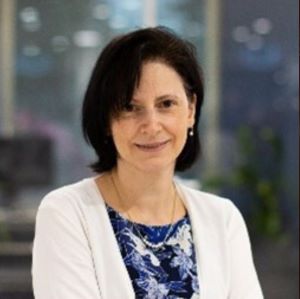
Professor Katia Parodi is the Chair of Medical Physics at the Physics Faculty of the Ludwig-Maximilians-Universität München in Munich, where she initiated a dedicated curriculum for Medical Physics within the MSc in Physics.
She received her PhD in Physics from the University of Dresden, Germany, in 2004. She then worked as a postdoctoral fellow at Massachusetts General Hospital and Harvard Medical School in Boston, USA. In 2006 she returned to Germany as a tenured scientist and group leader at the Heidelberg Ion Therapy Center, obtaining in 2009 her Habilitation from the Heidelberg University.
Her main interests are in high-precision image-guided radiotherapy focusing on ions, from computational modelling to experimental developments of novel methods for delivery, imaging and in-vivo ion range monitoring for pre-clinical and clinical applications. For her work Katia Parodi received national and international recognition, including the Behnken Berger Award in 2006, the IEEE (Institute of Electrical and Electronics Engineers) Bruce Hasegawa Young Investigator Medical Imaging Science Award in 2009, the AAPM (American Association of Physicists in Medicine) John S. Laughlin Young Scientist in 2015 and an ERC (European Research Council) Consolidator grant in 2016. In 2017-2018 she served as president of the German Society for Medical Physics. She has been the Editor-in-Chief of the journal Physics in Medicine and Biology since 2021, and an AAPM Fellow since 2024.
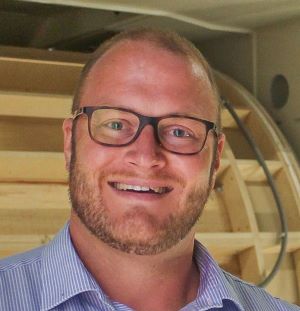
Associate Professor Dale Prokopovich has been working at MedAustron since 2020 starting as an Accelerator Physicist. He is currently the Director of Accelerator Technology and Co-Head of the Technology Business Unit since April 2024. During his time at MedAustron, Dale has been involved in commissioning projects for patient treatment including carbon ions in IR3 as well as the development of future accelerator improvements for therapy. Dale has also been very active in academia, resulting in academic appointments including an Associate Professorship from the University of Wollongong and affiliate positions at the University of Sydney and the University of Melbourne. He has also been heavily involved in multiple European particle therapy collaborations (HITRIplus, EuroSIG, IFast-REX, etc.) and the Organiser and Chair of the 2024 International Slow Extraction Workshop hosted in February at MedAustron.
Before moving to MedAustron, Dale was at the Australian Nuclear Science and Technology Organisation for 16 years where he was heavily involved in detector technology development as well as the development of Research Infrastructure for Australia, including several of the proposed Australian particle therapy facilities. Dale graduated from Wollongong University with degrees in both Science (Physics, Hons) and Computer Science before being awarded a PhD in aviation and space microdosimetry, also from Wollongong University. Dale has been heavily involved for over a decade with the various proposed Australian particle therapy centres including the various business cases and technology assessment process. Dale continues to support the Australian particle therapy community, proposals and business cases being developed.

Dr Francesco Romano is a Senior Researcher at the Italian National Institute for Nuclear Physics (INFN), Catania Division (Italy), where he is the Applied Physics Research Program Coordinator. His main expertise is in radiation dosimetry and Monte Carlo simulations for medical applications; his research group is currently working on novel approaches for dosimetry of ultra-high dose rate beams.
Before joining the INFN Catania Division, he had worked for over ten years at the INFN National Southern Laboratory in Catania, working on dosimetry and Monte Carlo simulations for proton/ion therapy and laser-driven beams. Since 2017, he moved to the United Kingdom, working for almost three years as a Senior Researcher in the Radiation Dosimetry group at the National Physical Laboratory in London, which is the UK National Metrology Institute. He was recently appointed for over one year as a part-time Associate Professor at PARTREC University Medical Center Groningen (Netherlands), working on dosimetry for proton therapy.
Francesco Romano is the Coordinator of the Advanced Example WG of the International Geant4 Collaboration and a member of the INFN National Committee for Technological Research. He was among the proponents of the “UHDpulse” EMPIR joint research project, for dosimetry of ultra-high pulse dose rate beams, and of the INFN “FRIDA” project. He is currently PI of the INFN-funded “MIRO” (for research on minibeam radiotherapy) and "DREAM" (for technological transfer of dosimeters for FLASH) national projects, member of the ESTRO FLASH Focus Group and Coordinator of the Working Group of the Italian Association of Medical Physics (AIFM) for addressing dosimetric challenges for FLASH and Minibeam Radiotherapy.
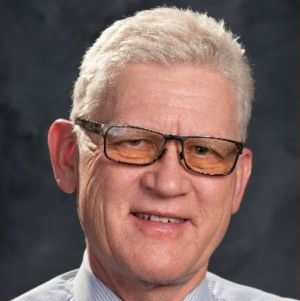
Professor Reinhard W. Schulte is a distinguished Radiation Research and Particle Therapy Professor at Loma Linda University. With a career spanning over thirty years, Professor Schulte has not only made significant contributions but also pioneered the field of nanodosimetry and particle therapy. His research, which focuses on understanding ionization processes at the nanometer scale and their implications for optimising particle therapy treatment planning, is truly groundbreaking.
Professor Schulte's work in nanodosimetry has led to the development of advanced mathematical models that enhance the precision of dose distribution in charged particle radiotherapy. His innovative approaches have been instrumental in improving the efficacy of treatments, particularly in carbon-ion therapy.
In addition to his research, Professor Schulte is actively involved in interdisciplinary collaborations, including his work with Professor Anatoly Rozenfeld from the University of Wollongong in micro- and nanodosimetry and proton computed tomography. He has also co-authored numerous publications with esteemed colleagues. Most recently, he has worked with Professor Keith Schubert from Baylor University and his then-graduate student, Dr Ha Nguyen, in collaboration with researchers from MD Anderson Cancer Center and Stanford University, on exploring the simulation of alternating electric fields in preclinical models of glioblastoma, which is his latest interest.
Professor Schulte's dedication to advancing medical physics and particle therapy has not only earned him recognition and invitations to speak at prestigious conferences worldwide but also inspired a new generation of scientists and clinicians. His commitment to fostering the next generation through his teaching and mentorship is a beacon of hope for the future of the field.
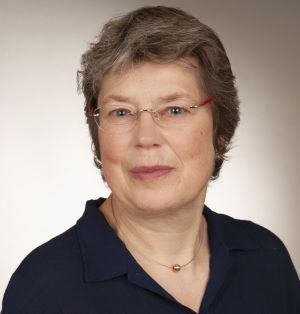
Professor Elisabeth Schültke is a trained neurosurgeon and practicing radiation oncologist at the Rostock University Medical Center in the North of Germany. Active in the biomedical synchrotron research community for more than two decades, she is particularly interested in the promising therapeutic options offered by spatially fractionated radiotherapy in general and microbeam radiation therapy (MRT) in particular.
On the DESY campus in Hamburg, Germany, Elisabeth was one of the leading lobbyists for a high dose rate irradiation research program at the PETRA III synchrotron, a dream that has come true in 2022 with the construction of a dedicated research module at beamline P61A.
Her favourite current project challenge: establishing a canine brain tumour research and therapy program at the Australian Synchrotron, in preparation of a first human clinical MRT trial, in collaboration with veterinarians, local colleagues and the team of Michael Lerch of the Centre for Medical Radiation Physics at the University of Wollongong.
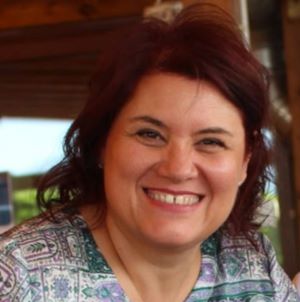
Professor Cinzia Talamonti is an Associate Professor of Medical Physics at the University of Florence. She earned her PhD in Physics from the University of Perugia in 1995 and completed her specialisation in Medical Physics at the University of Florence in 2002. Since 2020, she has served as the President of the School of Radiologic Technology at the University of Florence.
Professor Talamonti teaches Physics at the Medicine and Surgery School, Medical Physics at the Physics and Astrophysics School, and Physics Applied to Radiotherapy at the Radiographer School, all within the University of Florence.
Her research career began in medical physics, with a primary focus on radiotherapy. Since 1999, she has been active in the National Health Service Medical Physics Unit at Careggi University Hospital in Florence. Her research interests include conformal, stereotactic, intensity-modulated, and advanced rotational treatment techniques, addressing both dosimetric and imaging aspects, which are crucial for advanced radiotherapy treatments.
Professor Talamonti is also the Principal Investigator of several projects focusing on Artificial Intelligence applications in medicine. Additionally, she is a co-inventor of two patents: the “Bidimensional Dosimetric Detector” (FI2006A000166, patent US8563936) and the “A-Si Detector” (102021000003275).
She has published extensively in high-impact scientific journals (ORCID: [https://orcid.org/0000-0003-2955-6451]) and has led numerous research projects throughout her career.
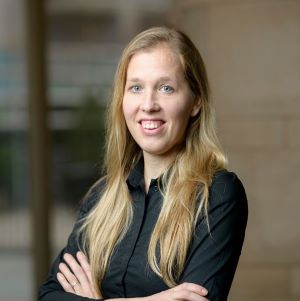
Dr Maria Thor is an assistant attending medical physicist with the Memorial Sloan Kettering Cancer Centre. Her main area of interest is in comprehensive outcome modelling to inform and encourage individualised treatments. Dr Thor’s research focuses on radiation dose-response modelling. She has investigated numerous different angles of individualisation such as the incorporation of patient-reported outcomes, the inclusion of imaging information, analytes acquired from blood, and a range of patient-specific information reflecting the disease, treatment, and an individual’s underlying characteristics. Her ultimate ambition is to translate her research models into updated treatment guidelines to better tailor treatments with regard to an individual’s anticipated radiation dose tolerance.
Dr Thor obtained her medical physics degree from Lund University (Sweden) and completed her PhD at Aarhus University (Denmark), after which she joined the Department of Medical Physics at MSK for a postdoctoral fellowship.
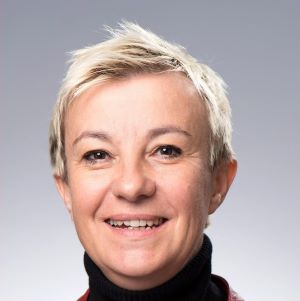
Dr Marie-Catherine Vozenin is currently the Head of Radiotherapy and Radiobiology at the Hôpitaux Universitaires de Genève. The research projects that Marie-Catherine develops with her team have a primary goal of discovering innovative tools able to protect normal tissue and enhance tumour control. One significant accomplishment has been the development of a groundbreaking radiation therapy technique called FLASH radiotherapy, which offers to reduce normal tissue toxicity and eradicate tumours in various organs including the brain, lungs and skin. Marie-Catherin and her team have successfully tested this new approach of RT on various species, including mice, zebrafish, mini-pigs, and cats. Their efforts have primarily focused on exploring the distinct biological reactions triggered by FLASH exposure on normal tissue and tumours and recently they found that FLASH could overcome radiation resistance. A crucial aspect of their work involves ensuring the advancement of FLASH into safe and meaningful clinical trials for human cancer patients.
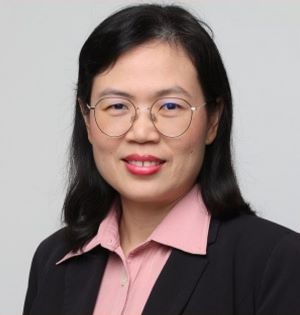
Professor Jeannie Wong studied Biomedical Engineering, followed by a Master of Medical Physics at the Universiti Malaya. She received her PhD from the University of Wollongong, Australia. She started her career at the Department of Biomedical Imaging, Faculty of Medicine, the Universiti Malaya, as a senior lecturer in 2011. She is the coordinator of the UM Master of Medical Physics program, accredited by the Institute of Physics and Engineering in Medicine (IPEM), UK. It is the only postgraduate medical physics program outside the UK and Ireland that has this accreditation.
During her PhD study, Jeannie was instrumental in the development of a new field of medical dosimetry in radiation therapy quality assurance with high spatial resolution semiconductor dosimetry and its applications in radiation therapy quality assurance. She has since further extended her research to include dosimetry in diagnostic imaging and patient-specific dosimetry. She has published more than 85 papers to date. Jeannie was promoted to associate professor in 2018 and to full professorship in 2024. Her research interests include radiation dosimetry, radiotherapy, medical imaging and radiomics. She had supervised, to completion, 1 postdoctoral candidate, 7 PhD students, 2 masters by research students, and more than 45 masters by coursework students.
IN 2019, Jeannie received the South East Asian Federation of Organisations of Medical Physics (SEAFOMP) Young Leader Award.


